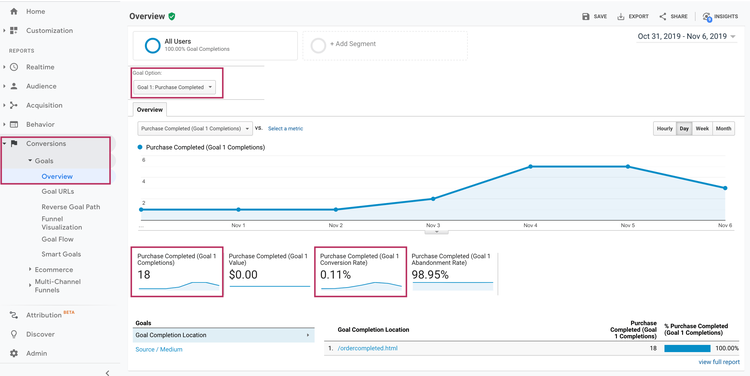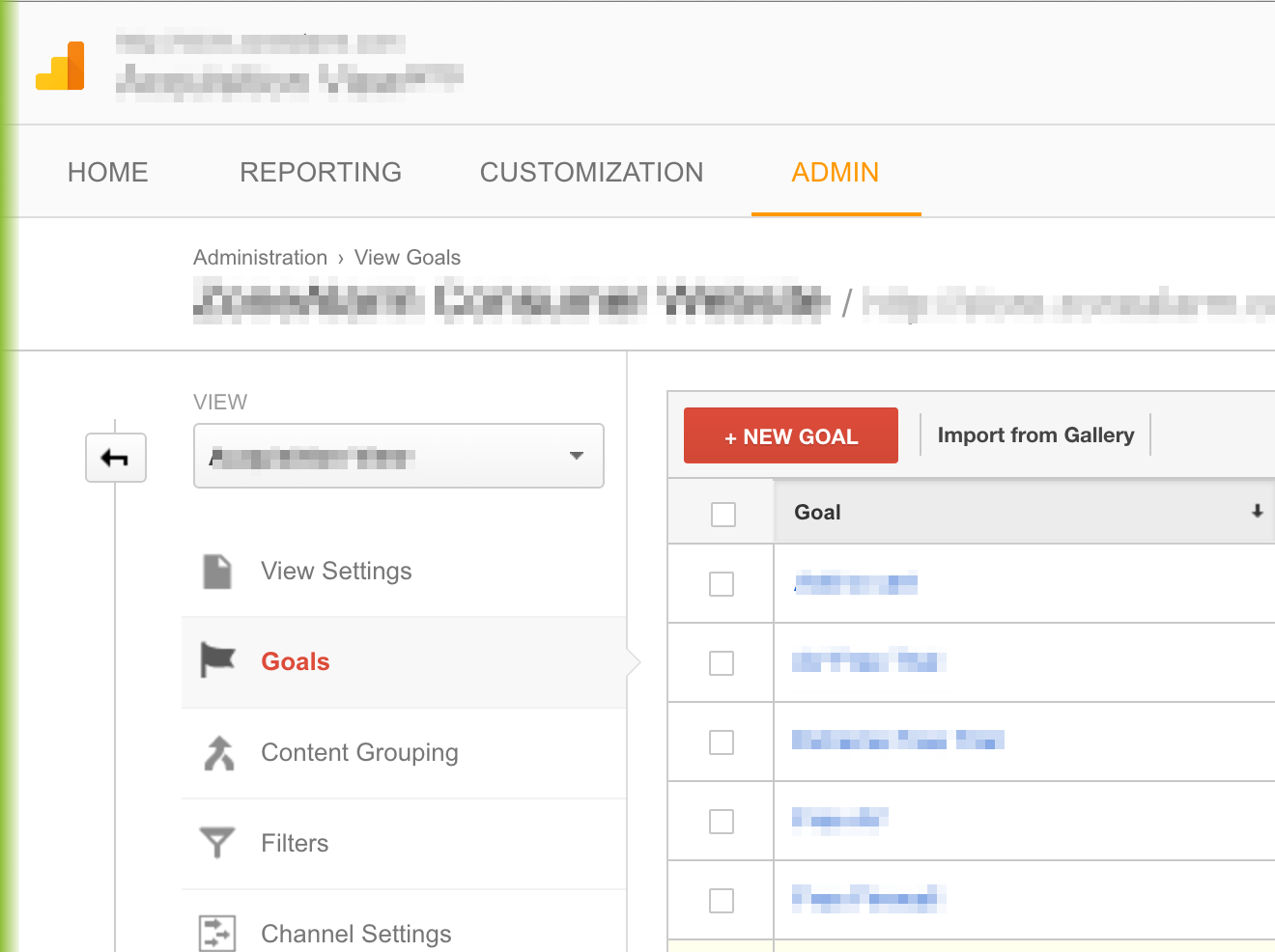What Data Is Google Analytics Goals Unable to Track: A Complete Guide
What Data Is Google Analytics Goals Unable to Track: A Complete Guide
Blog Article
Discover the Limitations of Google Analytics Goals: Introducing the Data Types That Remain Untrackable
As services increasingly depend on data-driven decision-making, understanding the restrictions of tools like Google Analytics comes to be critical. While Google Analytics Goals offer valuable insights right into user communications, there exist data kinds that thwart tracking, posing difficulties to a thorough understanding of individual actions. These untrackable data kinds question about the accuracy and efficiency of the analytics data that companies heavily trust for their digital approaches. Curious to discover the covert dead spots in your information analysis procedure?
Incomplete Individual Trip Tracking
Insufficient customer trip monitoring within Google Analytics can impede the ability to precisely examine individual habits. When the customer trip is not totally tracked, there are gaps in the data that avoid a detailed understanding of just how users interact with an internet site. This absence of insight can result in missed possibilities for optimization and enhancements to the individual experience.
One typical issue with insufficient user journey tracking is the failure to see the full path that users take previously finishing a goal or leaving the site. Without this info, it is testing to identify where individuals may be running into obstacles or friction factors that stop them from converting. Additionally, insufficient monitoring can cover the impact of particular advertising efforts or web site adjustments on user behavior.
To resolve this limitation, it is crucial to establish up correct monitoring systems within Google Analytics to capture the whole individual journey. This might involve establishing occasion tracking, objective funnels, or utilizing devices like Google Tag Supervisor to make sure that no crucial interactions go unrecorded. By gaining a detailed view of the user trip, web site proprietors can make even more informed choices to boost customer involvement and drive conversions.
Attribution Challenges
Navigating with acknowledgment difficulties in Google Analytics needs a comprehensive understanding of exactly how various touchpoints add to the overall conversion procedure. Acknowledgment obstacles arise from the complexity of modern-day client trips, where individuals engage with multiple networks prior to converting. Google Analytics gives various acknowledgment designs like first touch, last touch, and direct, each supplying a different perspective on how credit history is designated to touchpoints along the conversion course. These models may not always precisely reflect the true impact of each touchpoint on the conversion.
One common attribution challenge is the problem in associating conversions to the proper resource, particularly in cases where customers connect with numerous channels prior to transforming. In addition, cross-device monitoring positions an additional acknowledgment difficulty, as customers frequently switch between gadgets during their trip, making it challenging to track their communications perfectly.
Offline Conversions
Given the difficulties related to attributing conversions properly in online networks, the dimension of offline conversions provides a significant possibility for online marketers looking for a more extensive understanding of their customers' trip. Offline conversions refer to activities that clients take in the physical globe, such as making purchases in brick-and-mortar shops or over the phone, going to occasions, or engaging with printed products - what data is google analytics goals unable to track. These conversions are critical for companies that operate both online and offline, as they supply useful understandings into the effectiveness of marketing campaigns throughout different touchpoints
Tracking offline conversions traditionally positioned a substantial obstacle for marketers, as it was challenging to link these actions back to certain on-line communications accurately. With advancements in technology, such as the integration of CRM systems, special identifiers, and coupon codes, businesses can now bridge the gap in between online and offline information to obtain a more holistic sight of customer habits. By efficiently determining offline conversions, marketers can enhance their methods, allot resources more efficiently, and ultimately enhance the total consumer experience.
Cross-Device Tracking
Cross-device tracking plays a vital duty in comprehending the interconnected nature of consumers' digital communications across numerous tools. In today's omnichannel world, where customers flawlessly switch between smart devices, tablets, and desktops, tracking their actions throughout these gadgets is important for marketers to get a detailed sight of their customer trip.

Moreover, privacy issues and laws such as GDPR and CCPA have additionally difficult cross-device monitoring. With customers demanding more control over their data and raised constraints on tracking modern technologies, online marketers need to discover privacy-compliant and ingenious methods to connect customer communications throughout gadgets.
Dynamic Material Interaction
Understanding customer engagement with vibrant web content is crucial in maximizing digital advertising techniques for improved audience interaction. Dynamic web content describes internet site components that transform based on customer behavior, choices, or other factors, supplying a customized experience. Nonetheless, tracking individual interactions with vibrant content positions challenges for traditional analytics devices like Google Analytics.
While Google Analytics can track basic communications like clicks and page sights, it may battle to record more nuanced engagements look at this website within vibrant material. what data is google analytics goals unable to track. Metrics such as time invested in details dynamic elements, float actions, or interactions within pop-ups are usually not conveniently measurable making use of conventional monitoring approaches. This restriction prevents online marketers' capability to fully grasp just how users are engaging with dynamic material and tailor their methods appropriately

Conclusion
In verdict, Google Analytics goals have restrictions in tracking incomplete customer trips, attributing conversions precisely, recording offline conversions, tracking cross-device interactions, and determining dynamic material engagement. These restraints highlight the significance of discovering added tracking techniques and tools to get a more thorough understanding of customer actions and conversions past what Google Analytics can give.
While Google Analytics Goals browse this site offer valuable insights right into user communications, there exist information types that elude tracking, positioning challenges to a detailed understanding of customer actions.Insufficient customer trip tracking within Google Analytics can hinder the capability to precisely examine customer habits. When the individual journey is not fully tracked, there are gaps in the data that protect against an extensive understanding of address exactly how individuals communicate with a web site.One common issue with incomplete customer trip tracking is the inability to see the full course that individuals take before finishing an objective or leaving the site. By gaining a thorough sight of the customer journey, website proprietors can make even more educated decisions to boost individual interaction and drive conversions.
Report this page